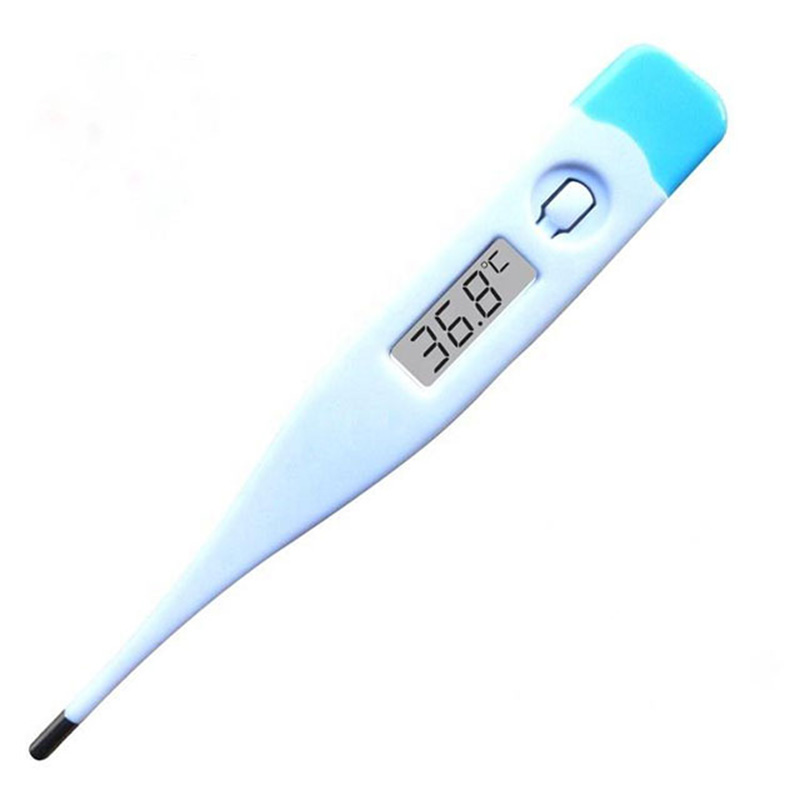Introduction to Digital Thermometers
Digital thermometers are vital tools used across homes, clinics, and hospitals, providing quick and reliable temperature readings. The need for precise temperature measurements is paramount, especially when it comes to diagnosing fevers and other health-related issues. With the evolution of technology, digital thermometers have become more sophisticated, offering various functionalities tailored to different needs. As such, choosing the right type of digital thermometer is crucial. This article analyzes the types of digital thermometers available, their accuracy, and which might be the best fit for specific situations.
● An Overview of Digital Thermometer Usage
Digital thermometers have largely replaced traditional mercury thermometers due to their ease of use, safety, and quicker response times. They can provide readings to the nearest tenth of a degree, an essential aspect for medical diagnostics. The importance of accurate body temperature readings cannot be overstated as they help identify underlying medical conditions and track recovery.
Rectal Thermometers: The Gold Standard
● Explanation of Rectal Thermometer Accuracy
Rectal thermometers are often regarded as the gold standard for measuring body temperature. They deliver the most accurate readings because they measure the core body temperature directly. This method is particularly essential for infants and young children, where other thermometer types might not provide reliable results.
● Benefits for Infants and Young Children
Rectal thermometers are widely recommended for children under three years of age due to their precision. Pediatricians often rely on these readings to make informed decisions about a child's health, especially in emergency situations where accurate readings are critical.
● Considerations and Limitations
While rectal thermometers provide unparalleled accuracy, they may not be the most comfortable option, especially for older children and adults. Proper hygiene and cautious usage are required to prevent any potential discomfort or infections.
Oral Thermometers: Balancing Accuracy and Comfort
● How Oral Thermometers Work
Oral thermometers are another popular choice, especially among adults and older children. They work by measuring the temperature from under the tongue, providing a good balance of accuracy and convenience.
● Proper Usage for Best Results
To ensure accurate readings, oral thermometers must be used correctly. Individuals should refrain from consuming hot or cold drinks at least 15 minutes before taking a measurement to prevent skewed results.
● Factors Affecting Measurement Accuracy
Factors such as incorrect placement, recent ingestion of food or beverages, and breathing through the mouth can affect the accuracy of oral thermometers. Users must adhere to specific guidelines to ensure reliable readings.
Tympanic Thermometers: Ear-Infrared Technology
● Mechanism of Tympanic Thermometers
Tympanic thermometers, or ear thermometers, utilize infrared technology to measure the temperature inside the ear canal quickly. This makes them a favored choice for both home and clinical settings.
● Suitable Age Range for Use
These thermometers are appropriate for children and adults over six months old. They provide a non-invasive way to capture temperature, making them a great choice for squirmy toddlers.
● Pros and Cons of Ear Temperature Readings
While tympanic thermometers offer rapid readings, their accuracy can be compromised by earwax buildup or incorrect positioning. Users must follow manufacturer instructions precisely to ensure the best results.
Temporal Artery Thermometers: Forehead Convenience
● Understanding Temporal Thermometers
Temporal artery thermometers are non-invasive and measure temperature by scanning the forehead. The ease of use and non-contact nature make them increasingly popular in both homes and clinical environments.
● Pros of Non-Contact and Quick Results
These thermometers are excellent for quick screenings and for use on sleeping children or older adults. They reduce the risk of cross-contamination as they do not need to touch the skin.
● Discussing Potential Inaccuracies
Despite their convenience, temporal thermometers can sometimes provide inconsistent results due to environmental factors, such as ambient temperature or perspiration. Ensuring consistent usage is key to obtaining reliable measurements.
Axillary Thermometers: Armpit Readings Explained
● Explanation of Axillary Thermometer Function
Axillary thermometers measure temperature from the armpit and are one of the least invasive methods. They are often used in situations where other methods are not feasible.
● When and How to Use Them Effectively
Axillary readings are considered less precise than other methods. They are best used when other methods are not viable, such as with patients who cannot tolerate oral or rectal thermometers.
● Comparison of Accuracy with Other Methods
While axillary thermometers are easy to use, their readings can be less reliable. It is usually recommended to follow up with another thermometer type if a precise temperature measurement is crucial.
Comparing Technologies: Infrared vs. Digital
● Overview of Infrared Thermometer Benefits
Infrared thermometers, including tympanic and temporal varieties, offer non-contact, fast readings. They are particularly useful in busy settings where quick, frequent measurements are necessary.
● Digital Thermometers and Their Applications
Digital thermometers include oral, rectal, and axillary types, providing versatility across different scenarios. They are reliable, easy to use, and generally more affordable than infrared options.
● Accuracy Comparison Between Technologies
While infrared thermometers provide speed and convenience, digital thermometers often offer more consistent accuracy when used correctly. Choosing between them depends on specific needs and circumstances.
Smart Thermometers: Connectivity and Data Tracking
● Features of Smart Thermometers
Smart thermometers integrate modern technology, offering features like Bluetooth connectivity and smartphone apps for tracking temperature data over time. This is valuable for individuals managing chronic illnesses or for parents monitoring their children's health.
● Advantages of App Connectivity for Health Tracking
The ability to track and share data with healthcare providers enhances patient care. Smart thermometers can help identify patterns and provide insights into health conditions, making them a valuable tool for proactive health management.
● Privacy Considerations with Digital Data
With the benefits of data tracking come privacy concerns. Users should ensure that any digital thermometer they choose complies with privacy standards to protect personal health information.
Choosing the Right Thermometer for Your Needs
● Factors to Consider: User Age, Comfort, and Cost
The choice of thermometer depends on several factors, including the age of the user, the need for precision, ease of use, and budget. For children, comfort and ease of measurement may be a priority, while adults may focus more on accuracy.
● Prioritizing Accuracy Versus Convenience
While convenience is important, accuracy should not be compromised. Users should weigh the pros and cons of each type to decide which digital thermometer best meets their needs, whether it's an OEM Digital Thermometer, a Custom Digital Thermometer, or one from a Digital Thermometer manufacturer.
● Recommendations for Specific Demographic Groups
Infants and young children benefit most from rectal thermometers due to their accuracy. Older children and adults can use oral or tympanic thermometers, while smart thermometers offer tracking capabilities for those needing ongoing health monitoring.
Conclusion: Making Informed Decisions
● Summarizing Key Points on Thermometer Accuracy
Each type of digital thermometer has its strengths and weaknesses. Rectal thermometers deliver the most accurate readings but may not be suitable for all ages. Oral thermometers balance accuracy with convenience, while tympanic and temporal thermometers offer non-invasive options. Axillary thermometers, although less accurate, provide a useful alternative for specific cases.
● Emphasizing the Role of Thermometer Choice in Healthcare
Choosing the right thermometer is crucial for accurate health assessments. Understanding the benefits and limitations of each type helps individuals make informed decisions, ensuring reliable and effective health monitoring.
● Encouragement to Consult Healthcare Providers for Recommendations
Healthcare providers can offer guidance on choosing the best digital thermometer for individual needs. Consulting with professionals helps ensure that the chosen device meets both personal and medical requirements.
Leis: A Commitment to Quality and Innovation
Leis is a leading and rapidly growing medical supplier dedicated to the research, design, and development of medical devices. With a rich history in providing high-quality products, Leis is committed to building long and stable partnerships with customers. The range of products includes digital thermometers, infrared thermometers, and a variety of other medical instruments. The company's dedication to quality is evidenced by its compliance with ISO13485 standards and CE certification, ensuring exceptional service and satisfaction. Leis continues to innovate and expand its offerings to meet the evolving needs of the medical field.

